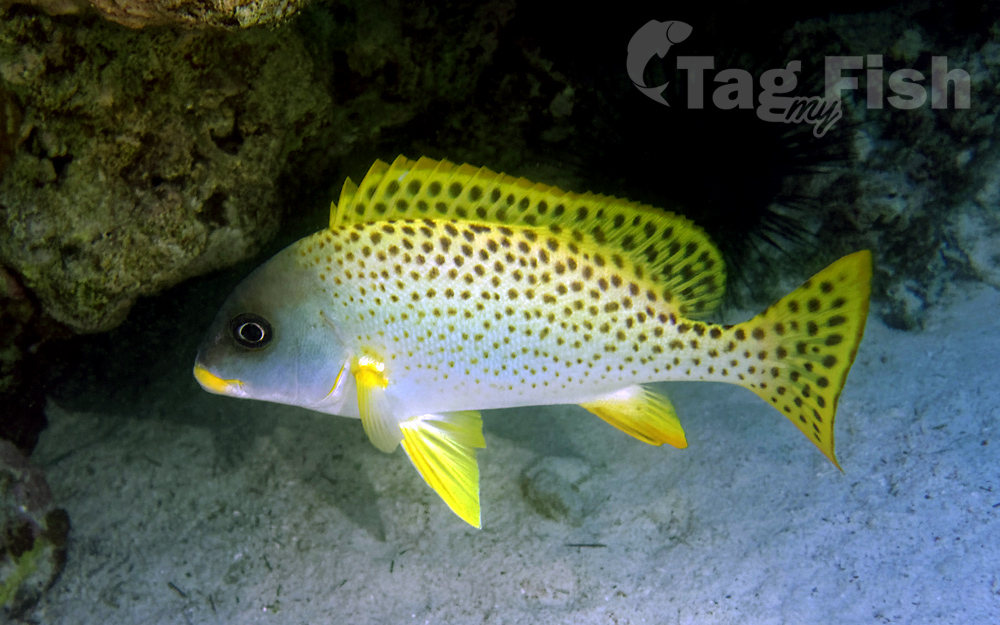Blackspotted rubberlip
(Plectorhinchus gaterinus)

Classification
General data
Description
Plectorhinchus gaterinus has fleshy lips but these do not have a swollen appearance. The chin has 6 pores but lacks a median pit. Its pelvic fins are longer than its pectoral fins. The predominant color is yellowish-grey with a greenish back and yellowish belly. The body and fins are marked with rows of dark grey or black-brown spots. The juveniles are light silver-grey and have yellow fins and 5 to 7 brown horizontal bands which split up into lines of spots once the fish grows to a standard length of 10 to 12 cm (3.9 to 4.7 in). The dorsal fin has 13 spines and 19-20 soft rays and the anal fin contains 3 spines and 7 soft rays. This species attains a maximum total length of 50 cm (20 in), although 35 cm (14 in) is more typical.
Distribution
Plectorhinchus gaterinus is found in the Western Indian Ocean. It occurs along the eastern coast of Africa from KwaZulu Natal north into the Red Sea as far north as the Gulf of Aqaba. It is also found in the Sea of Oman and the Persian Gulf and around the islands of the Seychelles, Mauritius, Madagascar, Réunion and Comoro Islands. A juvenile was recovered from the gut of a European squid (Loligo vulgaris) in the Aegean Sea which may indicate Lessepsian migration through the Suez Canal but this is thought unlikely.
Habitat and biology
Plectorhinchus gaterinus is found at depths of 5 to 55 m (16 to 180 ft) on coastal reefs, sandbank, and in the vicinity of estuaries. It is frequently found in large aggregations below ledges or along reef slopes during the day.[4] The juveniles often occur in beds of seagrass. They feed on mainly on smaller fishes and crustaceans. A spawning aggregation has been observed in the Persian Gulf off Kuwait. It is an oviparous species which spawns as distinct pairs.










